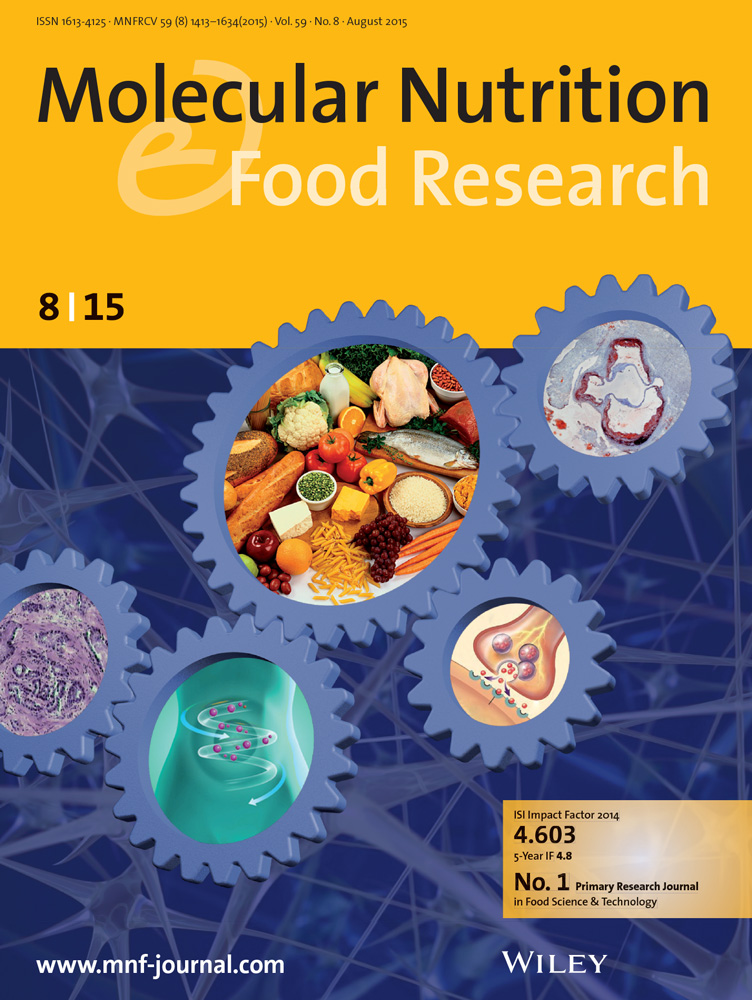Breast Milk Proteome: Changes in the Different Stages of Lactation and Impacts of Gestational Diabetes Mellitus and Body Mass Index
IF 4.2
2区 农林科学
Q1 FOOD SCIENCE & TECHNOLOGY
引用次数: 0
Abstract
Breast milk proteome comprises hundreds of bioactive proteins supporting infant development. The extent to which maternal metabolic conditions modify the proteome is poorly known. This study investigates proteome evolution from colostrum to mature milk and examines the impacts of maternal gestational diabetes mellitus (GDM) and BMI on the proteome. We analyzed the proteome by data‐independent acquisition (DIA)‐based LC‐MS/MS from colostrum and mature milk samples collected from mothers (母乳蛋白质组:哺乳期不同阶段的变化及妊娠期糖尿病和体重指数的影响
母乳蛋白质组包含数百种支持婴儿发育的生物活性蛋白质。母体代谢条件改变蛋白质组的程度尚不清楚。本研究研究了从初乳到成熟乳的蛋白质组进化,并探讨了母体妊娠糖尿病(GDM)和体重指数对蛋白质组的影响。我们通过基于数据独立采集(DIA)的LC - MS/MS从不同BMI值和(n = 11)或(n = 36) GDM的母亲(n = 47)收集的初乳和成熟乳样品中分析蛋白质组。我们鉴定了3496种蛋白质,其中1055种在初乳和成熟乳之间存在差异。初乳富含与MHC II抗原反应、肠道IgA、黏附和糖基化相关的蛋白质,而成熟乳则富含脂质生物合成、蛋白质翻译和降解。在成熟的乳汁中,GDM和高BMI的母亲与高密度脂蛋白形成相关的蛋白质水平增加。初乳中普遍存在支持幼稚肠道免疫系统成熟的蛋白质,而成熟乳中普遍存在的蛋白质反映了乳腺在生物合成方面的努力。BMI和GDM对母乳蛋白质组都有可测量的影响。这些发现对儿童未来健康的临床意义需要澄清。
本文章由计算机程序翻译,如有差异,请以英文原文为准。
求助全文
约1分钟内获得全文
求助全文
来源期刊

Molecular Nutrition & Food Research
工程技术-食品科技
CiteScore
8.70
自引率
1.90%
发文量
250
审稿时长
1.7 months
期刊介绍:
Molecular Nutrition & Food Research is a primary research journal devoted to health, safety and all aspects of molecular nutrition such as nutritional biochemistry, nutrigenomics and metabolomics aiming to link the information arising from related disciplines:
Bioactivity: Nutritional and medical effects of food constituents including bioavailability and kinetics.
Immunology: Understanding the interactions of food and the immune system.
Microbiology: Food spoilage, food pathogens, chemical and physical approaches of fermented foods and novel microbial processes.
Chemistry: Isolation and analysis of bioactive food ingredients while considering environmental aspects.
 求助内容:
求助内容: 应助结果提醒方式:
应助结果提醒方式:


